Hemokinin-1 is a mediator of chronic restraint stress-induced pain
- PMID: 37973885
- PMCID: PMC10654722
- DOI: 10.1038/s41598-023-46402-7
Hemokinin-1 is a mediator of chronic restraint stress-induced pain
Abstract
The Tac4 gene-derived hemokinin-1 (HK-1) binds to the NK1 receptor, similarly to Substance P, and plays a role in acute stress reactions and pain transmission in mice. Here we investigated Tac4 mRNA expression in stress and pain-related regions and its involvement in chronic restraint stress-evoked behavioral changes and pain using Tac4 gene-deleted (Tac4-/-) mice compared to C57Bl/6 wildtypes (WT). Tac4 mRNA was detected by in situ hybridization RNAscope technique. Touch sensitivity was assessed by esthesiometry, cold tolerance by paw withdrawal latency from 0°C water. Anxiety was evaluated in the light-dark box (LDB) and open field test (OFT), depression-like behavior in the tail suspension test (TST). Adrenal and thymus weights were measured at the end of the experiment. We found abundant Tac4 expression in the hypothalamic-pituitary-adrenal axis, but Tac4 mRNA was also detected in the hippocampus, amygdala, somatosensory and piriform cortices in mice, and in the frontal regions and the amygdala in humans. In Tac4-/- mice of both sexes, stress-induced mechanical, but not cold hyperalgesia was significantly decreased compared to WTs. Stress-induced behavioral alterations were mild or absent in male WT animals, while significant changes of these parameters could be detected in females. Thymus weight decrease can be observed in both sexes. Higher baseline anxiety and depression-like behaviors were detected in male but not in female HK-1-deficient mice, highlighting the importance of investigating both sexes in preclinical studies. We provided the first evidence for the potent nociceptive and stress regulating effects of HK-1 in chronic restraint stress paradigm. Identification of its targets might open new perspectives for therapy of stress-induced pain.
© 2023. The Author(s).
Conflict of interest statement
The authors declare no competing interests.
Figures
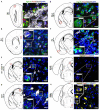

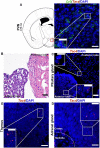
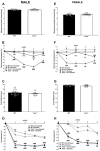
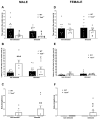
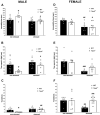

Similar articles
-
Hemokinin-1 mediates anxiolytic and anti-depressant-like actions in mice.Brain Behav Immun. 2017 Jan;59:219-232. doi: 10.1016/j.bbi.2016.09.004. Epub 2016 Sep 9. Brain Behav Immun. 2017. PMID: 27621226
-
Hemokinin-1 is an important mediator of pain in mouse models of neuropathic and inflammatory mechanisms.Brain Res Bull. 2019 Apr;147:165-173. doi: 10.1016/j.brainresbull.2019.01.015. Epub 2019 Jan 18. Brain Res Bull. 2019. PMID: 30664920
-
Hemokinin-1 Gene Expression Is Upregulated in Trigeminal Ganglia in an Inflammatory Orofacial Pain Model: Potential Role in Peripheral Sensitization.Int J Mol Sci. 2020 Apr 22;21(8):2938. doi: 10.3390/ijms21082938. Int J Mol Sci. 2020. PMID: 32331300 Free PMC article.
-
Role of tachykinin 1 and 4 gene-derived neuropeptides and the neurokinin 1 receptor in adjuvant-induced chronic arthritis of the mouse.PLoS One. 2013 Apr 23;8(4):e61684. doi: 10.1371/journal.pone.0061684. Print 2013. PLoS One. 2013. PMID: 23626716 Free PMC article.
-
Chronic variable stress alters hypothalamic-pituitary-adrenal axis function in the female mouse.Physiol Behav. 2019 Oct 1;209:112613. doi: 10.1016/j.physbeh.2019.112613. Epub 2019 Jul 9. Physiol Behav. 2019. PMID: 31299374 Free PMC article.
Cited by
-
Effects of Stress Exposure to Pain Perception in Pre-Clinical Studies: Focus on the Nociceptin/Orphanin FQ-NOP Receptor System.Brain Sci. 2024 Sep 19;14(9):936. doi: 10.3390/brainsci14090936. Brain Sci. 2024. PMID: 39335430 Free PMC article. Review.
-
How does chronic psychosocial distress induce pain? Focus on neuroinflammation and neuroplasticity changes.Brain Behav Immun Health. 2025 Feb 10;44:100964. doi: 10.1016/j.bbih.2025.100964. eCollection 2025 Mar. Brain Behav Immun Health. 2025. PMID: 40034488 Free PMC article.
References
-
- Janssen LP, Medeiros LF, de Souza A, da Silva J. Fibromyalgia: A review of related polymorphisms and clinical relevance. Acad. Bras. Cienc. 2021;93:1018. - PubMed
Publication types
MeSH terms
Substances
LinkOut - more resources
Full Text Sources
Medical
Miscellaneous

